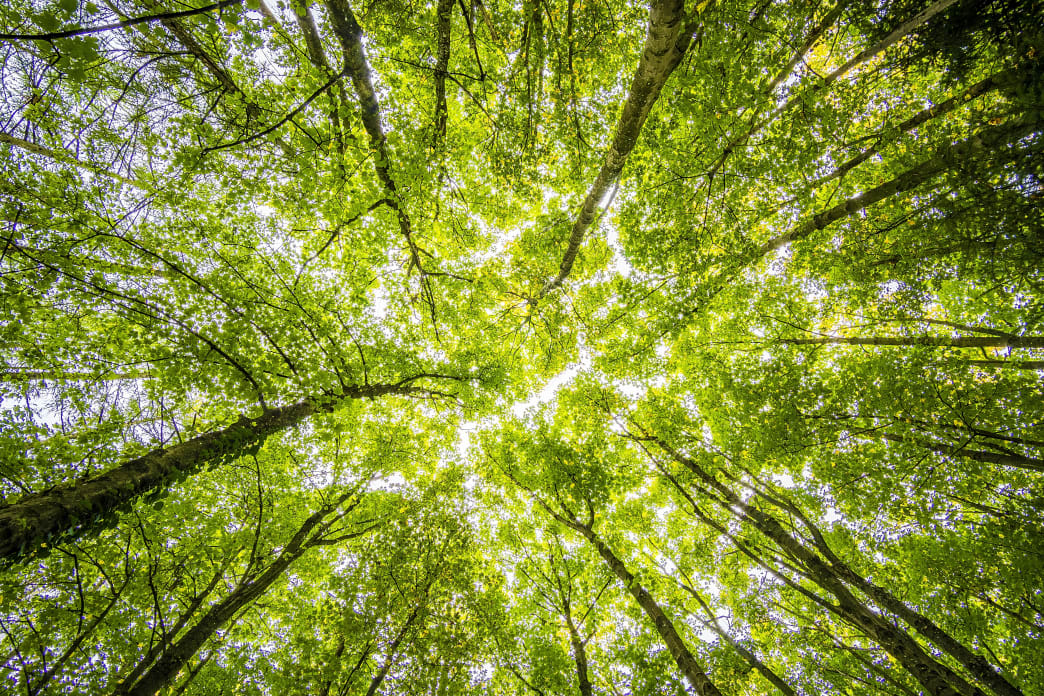Q: What’s the deal with “forest bathing?” Isn’t this just a walk in the woods?
—Joshua H., Myrtle Beach, S.C.
A: Well, yes, but it’s more than that. There’s a specific focus on being with the trees. A guided nature walk is generally chosen for informational content, and a hike typically is focused on a destination such as a mountaintop or scenic overlook. By contrast, the purpose of forest bathing is simply to “be” in the presence of the trees without any goal other than to allow the natural calming and healing potential of the forest to seep into our skin, eyes, and lungs.
Often people walking through cities, or even on trails, wear earbuds, or engage in other distractions. These aren’t bad activities, but when we really relax our brain chatter into the vast, non-hectic vibe of a forest, it can help us feel calmer and less stressed.
Amazingly, trees emit not only oxygen, but also a category of plant germ- and pest-repellents called phytoncides, which have been shown to promote health in humans. Phytoncides are pleasant-smelling volatile oils with innate antimicrobial properties. They not only render the forest air fresher, but inhaling these plant chemicals has been shown to improve immune system function.
Over thousands of years of “civilization,” we humans have become an indoor species. According to a 2001 EPA study, average Americans spend 87 percent of their time inside a building and 6 percent of their time inside a vehicle. Awareness of protecting, and interacting with, our great outdoors has increased since then, so I’m hopeful those rather dismal numbers have improved. Physiologically and emotionally, our optimal health and well-being depend on staying connected with our planet home.
Deep Roots
In the 1980s, forest therapy (shinrin-yoku) became part of a national health care program in Japan. The Japanese Ministry of Agriculture, Forestry, and Fisheries spent many years, and an impressive amount of money, on conducting field experiments, measuring the health parameters of forest bathers compared to controls walking through a city. One of the larger studies measured the subjects’ salivary cortisol (which increases with stress), blood pressure, pulse rate, and heart rate during a day in the city and compared the data with the same biometrics, on the same subjects, taken during a day that included a 30-minute forest visit. The study concluded, “Forest environments promote lower concentrations of cortisol, lower pulse rate, lower blood pressure, greater parasympathetic nerve activity, and lower sympathetic nerve activity than do city environments.”
Further, forest bathing, even after only 30 minutes, proved to be a psychological balm. The subjects showed reduced hostility and depression scores, coupled with increased liveliness, after exposure to trees. Thus, the researchers concluded that “forest environments can be viewed as therapeutic landscapes.”
After the initial findings were published and Japan began to designate certain trails as therapeutic, more and expanded studies were conducted in Korea, Finland, and the U.S., showing similar reductions in tension and anxiety among forest bathers. These were not just subjective benefits reported by participants; blood and urine samples taken before and after forest bathing showed a significant increase, up to 50 percent, in natural killer cells (a type of immune-boosting white blood cell that fights cancer and other diseases).
Branching Out
Taking in the sights, sounds, and smells of a forest can potentially arouse feelings of awe similar to viewing our planet from space, or having a personal breakthrough about how all life is connected, precious, and fleeting. Spending time amidst trees will absolutely improve your health, memory, attitude, and energy.
More and more humans on the planet are urban dwellers, living in spaces that do not readily allow for walking in the woods. Many of us no longer live anywhere near where the food we eat was grown. There is no going back—time and momentum move forward. But we can preserve a balanced relationship with our forests, for our own health, and the health of everyone. Find a stand of trees near where you live or work and consciously develop your relationship with these majestic plants. Both you and the trees will benefit!
Forest Bathing Resources
To learn more about forest bathing and get information on guided tours and immersion programs, check out these websites:
Written by emily for Better Nutrition and legally licensed through the Matcha publisher network. Please direct all licensing questions to legal@getmatcha.com.

